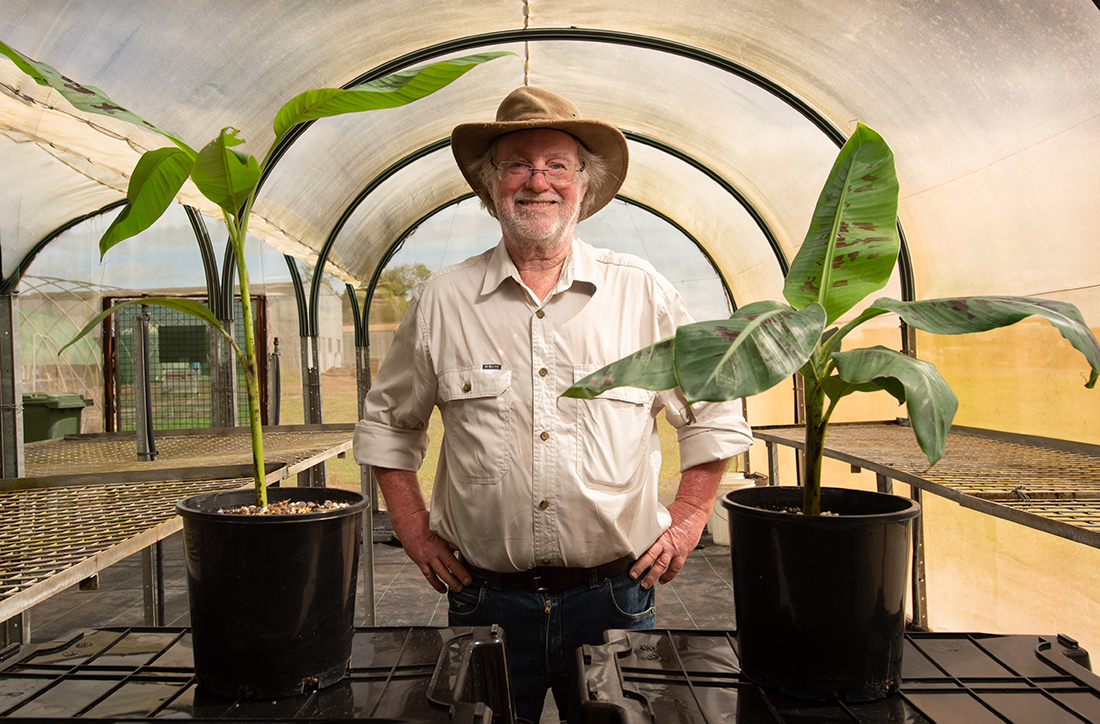After extensive field and laboratory evaluation, the next stage in the development of QCAV-4 is assessment by Australia’s internationally renowned regulatory agencies, the Office of the Gene Technology Regulator (OGTR) and Food Standards Australia New Zealand (FSANZ). The Regulators will assess an extensive data package prepared on QCAV-4 for environmental and food safety.
Regulatory dossiers have been prepared for OGTR and FSANZ and were submitted in early April 2023.
Independent regulatory approval by OGTR and FSANZ would support the environmental and food safety of QCAV-4. It would also allow for the commercial cultivation, sale, and consumption of QCAV-4 bananas in Australia. However, there are no plans to commercialise QCAV-4 in Australia at this stage. On-farm biosecurity measures have been successful in limiting the spread of the disease across the banana growing regions of Australia and are currently an effective protection strategy.
So far, we have not yet taste tested QCAV-4 bananas. Regulatory approval will allow us to establish independent panels to evaluate the smell, texture and flavour of QCAV-4 bananas compared to Cavendish bananas. We have, however, extensively analysed a range of nutritional parameters of our QCAV-4 bananas and compared them with Cavendish bananas. We have found them to be substantially equivalent to each other and therefore we don’t expect them to taste any different.
Except for disease resistance, QCAV-4 bananas are equivalent to Cavendish bananas. With regulatory approvals we will be able to examine a range of post-harvest and supply chain attributes such as shelf life.
QUT has and will continue to work with the banana industry’s peak body, the Australian Banana Growers’ Council, to keep industry and consumers well informed of all outcomes of this research and the regulatory assessment processes by OGTR and FSANZ.
QUT continues to research other innovative approaches to safeguard Australia’s much-loved Cavendish banana industry. We are also providing vital solutions for the international market to save the Cavendish banana export industry worldwide.
The vast majority of bananas eaten in Australia are Cavendish bananas. The next most popular is Lady finger with much smaller amounts of other varieties consumed such as Ducasse, Goldfinger and plantains.
Domestically, Australia's banana industry contributes AUD$1.3 billion annually to the Australian economy and generates in excess of 18,000 full-time equivalent jobs.
Gene technology is a process that can be used to genetically modify a plant, animal or other organism and is widely used in Australia: in agriculture, in research, in health and medicine, in education, and in industry. Gene technology is regulated in Australia under the Gene Technology Act 2000, the Gene Technology Regulations 2001 and corresponding state and territory legislation.
Further information on gene technology can be found at the Office of the Gene Technology Regulator (OGTR)
The Gene Technology Regulator is an independent statutory office holder responsible for administering the Gene Technology Act 2000 and corresponding state and territory laws. The Regulator is appointed by the governor-general only with the agreement of the majority of all jurisdictions.
The Office of the Gene Technology Regulator (OGTR) supports the Regulator. The OGTR and its staff are part of the Department of Health and Aged Care.
The OGTR assesses risks to human health and safety and the environment relating to dealings with GMOs.
Food Standards Australia New Zealand (FSANZ) is a statutory authority in the Australian Government Health portfolio. FSANZ develops food standards for Australia and New Zealand.
FSANZ conducts a thorough safety assessment of all GM foods before they are allowed in the food supply. This assessment ensures that any approved GM foods are as safe as non-GM foods already in the Australian and New Zealand food supply.
Further information on Food Standards Australia New Zealand (FSANZ)

